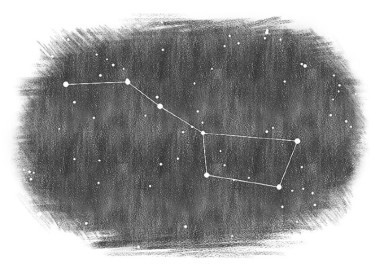by David Morstad
Today, countless children and adults will be described as being “on the spectrum”, i.e., the autism spectrum. It is a popular notion, a handy phrase, and people claim some knowledge of what it implies – even though that may not always be the case.
One of the simplest and arguably more accurate descriptions of the autism spectrum is Understanding the Spectrum, posted in 2016 by Theoraah. I highly recommend it. Presented in comic form, it draws this important distinction: The spectrum is not a continuum running from left (not autistic) to right (very autistic), even though that kind of simple scale of severity is often what a non-disabled professional community looks for. Instead, it is best understood as a multidimensional theory that takes into account the strengths, needs, social inclinations, and learning preferences of an individual.
When properly understood, the spectrum can be a valuable means of considering the broad range of human ability and perception. All that said, I’ve never been much of a fan of spectrum speak. It’s not that I’m doubtful of its usefulness in certain circumstances. I simply wonder if there is room for a companion concept, one that tempers our enthusiasm for the spectrum and provides some further insight. If we allow ourselves to be disturbed just enough, we may discover a better understanding not only of autism, but of disability in general.
The autism spectrum is a lot like a constellation. 
Of the countless stars in the night sky, we single out a few that form familiar shapes. The big and little dippers (Ursa Major and Minor for you astronomy geeks), Orion’s belt, Virgo, and a few others. In truth, those shapes aren’t really there, but we invent them in order to make sense of the other stars in the sky (and our own location, for that matter). When we consider a few things we know about constellations, we may discover some important relevance toward understanding disability.
- Constellations only look that way from where we are standing.
The recognizable shapes are formed of bright stars that appear close to each other in the sky but are actually light years from one another in space. They are also seen as though they exist on a two-dimensional plane (much like the spectrum) when in fact some stars are close and others far away. If seen from any other place in the universe, the construct of the Big Dipper simply disappears. Constellations are only there because we say they are.
When it comes to people, we often default to the disability that has a name and definition we know – or, at least, that we think we know. The spectrum tells us that person has strengths and weaknesses, but only from our own perspective. Viewed by a different culture, in another time, or through the eyes of a new social/educational philosophy, the picture may not be seen as a disability at all; but rather, just another version of the other seven billion people in the world.
- Stars are prominent because we point at them
Some stars in the sky appear more prominent than others, but mostly because we happen to be looking for a pattern familiar enough to merit our label. We point to some spots of light and declare them to be more important than others because of the role we imagine them to play in the picture we wish to create.
In the same respect, the full human spectrum consists of skills and preferences too vast to count; yet, we point to some and elevate their importance in an effort to create a particular familiar portrait, one that we can easily name. What becomes of the countless characteristics lying beyond the label? Where on the spectrum are we to find spirituality, hopefulness, love, creativity, artistry, self-reflection and other points of light from the ‘deep space’ of humanity?
- In the process of naming these few stars, we ignore an awful lot of others.
There is virtually no end to the number of stars in the heavens, yet these few that form convenient patterns command our attention. When children first learn to look into the night sky, we tell them exactly where to look, what patterns to identify, and what they are called. No doubt, some of these children will grow to become education and human services professionals who will evaluate in precisely the same way: This is what I’m looking for, and this is what it’s called. In truth, a non-disabled person’s view of disability is best when it is most skeptical of itself or, as the late advocate, Stella Young encouraged, constantly “questioning what we think we know about it.”
There is beauty in the night sky, not because of what our limited imaginations have conceived, but because of the vastness, artistry and wonder that has been knit there. May we learn to acknowledge the same in human diversity.

2 thoughts on “The Autism Constellation”